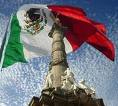By: Daniel Nardini
 The title of this article may not sound right. We know that the Nahua (descendants of the Aztecs) and the Mixteca live in what is now central Mexico primarily in the state of Mexico, Puebla, Guerrero and Oaxaca. They are lived in their ancestral communities for centuries since the Spanish conquest, and had built powerful civilizations prior to the coming of the Spanish. As has been the case for centuries, they have used their own native languages, lived by their traditional customs, and have rarely bothered with the outside world.
The title of this article may not sound right. We know that the Nahua (descendants of the Aztecs) and the Mixteca live in what is now central Mexico primarily in the state of Mexico, Puebla, Guerrero and Oaxaca. They are lived in their ancestral communities for centuries since the Spanish conquest, and had built powerful civilizations prior to the coming of the Spanish. As has been the case for centuries, they have used their own native languages, lived by their traditional customs, and have rarely bothered with the outside world.
So how can we find whole Nahua and Mixteca communities throughout the United States? The same factors that have affected Mexicans in general have also driven these two peoples up north. These factors are extreme poverty, lack of job opportunities, and discrimination. Nahua and especially Mixteca communities have established themselves along the U.S.-Mexico border. It is therefore possible to find Nahua and Mixteca communities in major cities like San Diego, El Paso, and Los Angeles. Likewise there are Nahua and Mixteca communities in the major Mexican border cities of Tijuana and Ciudad Juarez.
 Both Nahua and Mixteca communities are also found in New York City, Long Island and in northern New Jersey. As has been true for many immigrant groups, the Nahua and Mixteca have traveled and settled in neighborhoods where other Nahua and Mixteca live. In these communities Spanish is almost never spoken—only Nahuatl and Mixteca. Likewise Nahua and Mixteca have settled in other U.S. major cities around the countries like Chicago. No one is exactly sure how many indigenous Mexicans have come to live in the United States, and where they are all located, but it is estimated that there may be close to one million.
Both Nahua and Mixteca communities are also found in New York City, Long Island and in northern New Jersey. As has been true for many immigrant groups, the Nahua and Mixteca have traveled and settled in neighborhoods where other Nahua and Mixteca live. In these communities Spanish is almost never spoken—only Nahuatl and Mixteca. Likewise Nahua and Mixteca have settled in other U.S. major cities around the countries like Chicago. No one is exactly sure how many indigenous Mexicans have come to live in the United States, and where they are all located, but it is estimated that there may be close to one million.
Many of the Nahuas and Mixteca work on the large farms in California and elsewhere picking fruit and vegetables. Many also work in our construction, maintenance and food industries. They even serve as servants and maids to upper-middle class American families, and like so many Mexicans in general they work in our factories (those that we have left) and in the service sector. The Nahua and Mixteca diaspora is truly stretched over half a continent.












